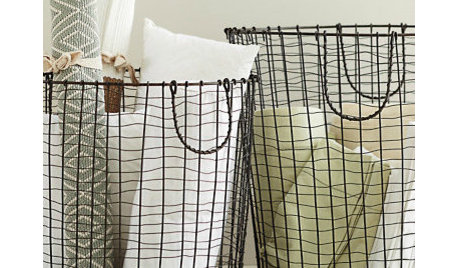Could I start one of these?
barb_roselover_in
12 years ago
Related Stories

PRODUCT PICKSGuest Picks: If I Could Have a Dorm Room Do-Over
One interior decorator reimagines the drab dorm room into a stylish, fun space to study and sleep
Full Story
DECORATING GUIDESHow to Decorate When You're Starting Out or Starting Over
No need to feel overwhelmed. Our step-by-step decorating guide can help you put together a home look you'll love
Full Story
HOUZZ TOURSMy Houzz: It All Started With a Rug
One floor covering from Kazakhstan inspires a whole global vibe in a traveler’s San Francisco apartment
Full Story
KITCHEN DESIGN91 Kitchen Banquettes to Start Your Morning Right
Slide into one of these stylish breakfast nooks and stay awhile
Full Story
DREAM SPACESIf You Could Choose One Dream Space ...
Yoga room, wine cellar, infinity pool or tricked-out garage — which of these luxurious rooms would be at the top of your list?
Full Story
GARDENING GUIDESHow to Stop Worrying and Start Loving Clay Soil
Clay has many more benefits than you might imagine
Full Story
INSIDE HOUZZInside Houzz: Starting From Scratch in a Manhattan Apartment
Even no silverware was no sweat for a Houzz pro designer, who helped a globe-trotting consultant get a fresh design start
Full Story
PRODUCT PICKSGuest Picks: A Nursery Starts With Art
A beautiful art print is the catalyst for this happy blue and yellow nursery design
Full Story
HOUZZ TOURSHouzz Tour: A Texas Home Gets a Healthy, Fresh Start
Mold eradication was just the beginning for this Austin family's home on a creek bed — toxins of all kinds now don't make it past the door
Full Story
LIVING ROOMSRoom of the Day: Vintage Posters Jump-Start a Happy Room Redesign
A bright and cheerful living room has this family feeling joyful again. See the before-and-afters
Full StoryMore Discussions






equinoxequinox
mendopete
Related Professionals
Garden City Landscape Architects & Landscape Designers · Kapaa Landscape Architects & Landscape Designers · Bell Gardens Landscape Contractors · El Sobrante Landscape Contractors · Fort Atkinson Landscape Contractors · North Highlands Landscape Contractors · Plantation Landscape Contractors · Soddy Daisy Landscape Contractors · Wayland Landscape Contractors · Winter Gardens Landscape Contractors · Acushnet Stone, Pavers & Concrete · Bryan General Contractors · Jericho General Contractors · Los Alamitos General Contractors · Panama City General Contractorsbarb_roselover_inOriginal Author
barb_roselover_inOriginal Author
OklaMoni
PeterK2
mendopete
mikey10
hoorayfororganic
equinoxequinox
steseaq
colin3
equinoxequinox
colin3